 As I suggested in a previous post, libraries, and access thereto, have social and political ramifications, because reading and writing constitute not just personal and private acts but social and political ones. For evidence of that fact we need look no further than the well-documented Muslim “barefoot and pregnant” policy of keeping women illiterate, exemplified by the relentless Islamist attacks on schools for girls, personified by the attempted murder of Malala Yousafzai by a band of Taliban thugs in October 2012, in retaliation for the publication of her pseudonymous blog “Diary of a Pakistani schoolgirl” on BBC Urdu. (Only parts of it have been translated into English.)
As I suggested in a previous post, libraries, and access thereto, have social and political ramifications, because reading and writing constitute not just personal and private acts but social and political ones. For evidence of that fact we need look no further than the well-documented Muslim “barefoot and pregnant” policy of keeping women illiterate, exemplified by the relentless Islamist attacks on schools for girls, personified by the attempted murder of Malala Yousafzai by a band of Taliban thugs in October 2012, in retaliation for the publication of her pseudonymous blog “Diary of a Pakistani schoolgirl” on BBC Urdu. (Only parts of it have been translated into English.)
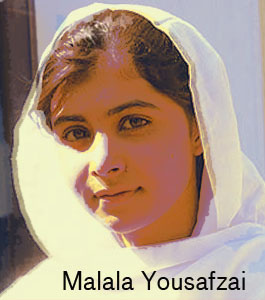
Malala Yousafzai, courtesy Creative Commons.
The bizarre, rambling open letter dated July 15, 2013, written by Adnan Rasheed, a senior commander of the Tehriki Taliban (TTP) in Pakistan, addressed to Yousafzai in Rasheed’s “personal” rather than official capacity, claims to have only “brotherly” motives. (For perspective on that assertion, keep in mind that the TTP proudly claimed responsibility for the assault, and that Islam encourages brothers to murder their sisters if they become convinced that their siblings have “dishonored” the family.)
Rasheed professes that he was “shocked” by the attack on her ― presumably like Captain Renault discovering gambling going on in Casablanca ― while urging her to return home to the district he and his gang control, where death threats against her and her family still stand. (I’m sure that, as Ariel Castro would say, “We have a lot of harmony going on in that home.”)
In its broken English, this pathetic screed, a lame, transparent attempt at damage control, serves up a classic stew of fundamentalist paranoia: Jews and Freemasons run the western world, U.N.-sponsored polio vaccinations secretly disguise sterilization serums. Substitute fluoride in the water for the polio vaccine and it’s not much different from what you hear on right-wing talk radio here in the U.S.
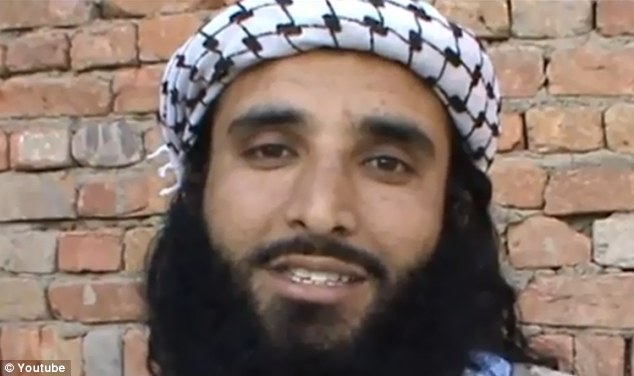
Taliban commander Adnan Rasheed, screenshot, YouTube.
Islamic fundamentalism does not require truthfulness of its believers in their dealings with “kuffar” (infidels), which allows Rasheed to call the carefully planned Taliban assassination attempt on Yousafzai’s life an “accident.” You don’t “accidentally” stop and board a school bus, single out a 15-year-old girl, and shoot her once in the head and once in the neck at point-blank range, and then publicly take credit for your actions. But radical Islam allows this kind of patent falsehood, which apparently does not dishonor the source or the faith itself in the minds of those who drink this Kool-Aid. (I should add that a group of 50 honorable Islamic clerics in Pakistan have issued a fatwa against the gunmen.)
Rasheed goes on to make the laughable statement that “Taliban or Mujahideen are not against the education of any men or women or girl,” a lie so flagrant that its stench surely reaches all the way to Paradise. A Taliban edict banning girls’ education, about which Yousafzai wrote in her blog, remains in force in Pakistan’s northwestern Swat district, from which Malala’s family fled to safety in the west.
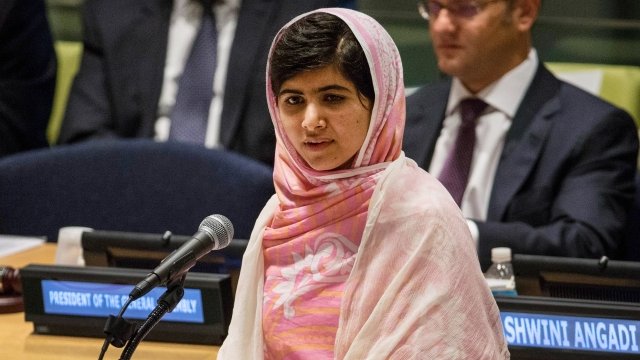
Malala Yousafzai, UN speech, July 12, 2013, screenshot.
This orchestrated hit on an adolescent schoolgirl has turned into a public relations nightmare for the Taliban, especially since the death squad botched its assignment. Flown to the U.K. for intensive rehabilitation, Yousafzai not only made a full recovery but has gone on to continue her blogging, start a foundation to promulgate the education of children worldwide, become an international hero and particularly a role model for girls throughout the Middle East ― and, most recently, on July 12th, her 16th birthday, to address the United Nations.
“One child, one teacher, one book, one pen, can change the world,” Malala says at the end of that eloquent speech. Still true, with her as living proof. Yet that speech, and the story leading up to it, has achieved its global scope through the digital media. And the compulsory worldwide education for which Malala calls, though it will surely involve physical books and paper and pens, will rely increasingly on digital tools: computers, the internet, digitized books and periodicals accessed through digital libraries.
. . . and Pixels Too
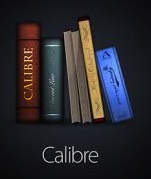 So there will be ink, and pixels too. In preparation for production of a forthcoming series of ebooks of my own writings, I’ve begun to read books in that format. Lacking still a dedicated ebook reader (such as the B&N Nook) or a tablet such as the iPad, I’ve installed the freeware open-source app Calibre on my Macs. It doesn’t gussy up the presentation, but then I don’t need any skeumorphic illusion of turning pages; if I’m going to read on my monitor, I know I’m not holding a printed and bound book in my hands.
So there will be ink, and pixels too. In preparation for production of a forthcoming series of ebooks of my own writings, I’ve begun to read books in that format. Lacking still a dedicated ebook reader (such as the B&N Nook) or a tablet such as the iPad, I’ve installed the freeware open-source app Calibre on my Macs. It doesn’t gussy up the presentation, but then I don’t need any skeumorphic illusion of turning pages; if I’m going to read on my monitor, I know I’m not holding a printed and bound book in my hands.
This app has its limitations. You can’t highlight in Calibre, and the only way to make marginal notes involves using the Bookmarks feature, which will export only in a Python-based .pickle file (readable by TextEditor), and may not travel with a book if I export it to a Kindle or other reader. I can’t curl up comfortably in a chair with my desktop Mini or MacBook Pro, or haul either out of my shoulder bag on the ferry, so this experience lacks the full convenience of both printed books and dedicated electronic reading devices. Aside from that, it’s not unpleasant. I don’t miss the physicality of bound paper, but then I’ve done almost all my writing, and a good bit of my reading, using a computer monitor for the past quarter-century. So I’m not some befuddled monk navigating the transition from scroll to bound book.
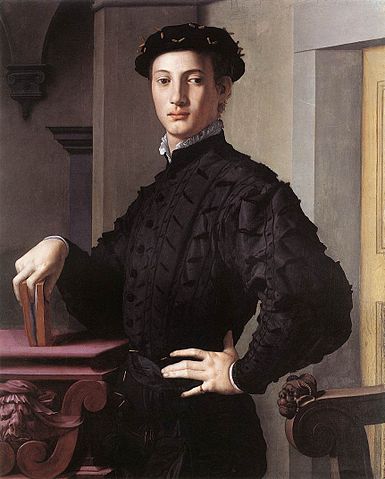
Agnolo Bronzino, “Portrait of a Young Man,” oil on panel, ca. 1535-40.
Granted, if I publish my books exclusively in digital editions I’m not likely to have the experience I once did of sitting across the aisle on the subway from someone visibly reading a copy of a just-released volume of mine, to prolong which pleasure I rode, watching him surreptitiously, until he reached his stop, well past mine. Nor will I find, on the shelves of a second-hand bookstore, neatly highlighted in several colors and annotated in a careful hand, clearly subjected to multiple attentive readings, a copy of that same book, which I revisited for weeks until it found a buyer and a new home.
But the operative word in the first sentence of the previous paragraph is “exclusively.” Nothing prevents me from simultaneously publishing these books of mine in print-on-demand (POD) form; indeed, I plan to do so. I and my readers thus can have our cake and eat it too, as it were, with purchasers choosing whichever format(s) best suit their needs.
Not to mention the value-added features that ebook format ― especially the enhanced ebook ― will allow me to incorporate. In their digital editions, these will become multimedia EPUB books. (EPUB comes as close as possible presently to a universal e-book standard.) Multi-platform and multi-device, this format will allow me to include links to external sites, such as a forum where readers can comment on the work, and will let me imbed audio and video files to enrich the reader’s encounter with my work. Already remarkable, from an author’s standpoint, the possibilities ― what’s visible on the horizon, what’s likely to come after ― more than compensate for what I’d lose if printed books disappeared altogether, not likely for decades to come.
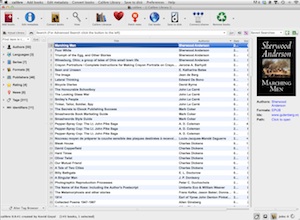
Calibre screenshot
In any case, the next time I make an extended trip (like the 16-hour flight to China), I’ll have a digital library of dozens of books on hand to while away the time. Over the long haul, I anticipate that this collection will grow to include visual books, photo books among them, because I’m convinced that the future of the illustrated book lies in the ebook or some other form of electronic delivery.
More on that next time.
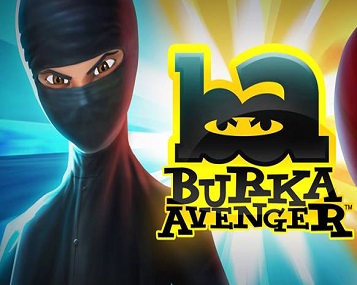 [Postscript, August 5, 2013: Malala Yousafzai’s ordeal and triumph partly inspired a forthcoming animated cartoon series for kids, Burka Avenger, brainchild of the Pakistani pop star Haroon. The heroine, Jiya, is a mild-mannered school teacher by day; but “by night the Burka Avenger (spelled with a ‘k’) dons a special burqa to protect girls’ schools, fighting the bad guys trying to shut them down,” using a martial-arts form that employs books and pens as weapons, taught to her by her stepfather. The 13-episode series, which will debut in mid-August, comes complete with online games, wallpapers, music videos by Haroon and other Pakistani pop stars, an iTunes album, and more. A brilliant example of image-making for progressive social purposes.]
[Postscript, August 5, 2013: Malala Yousafzai’s ordeal and triumph partly inspired a forthcoming animated cartoon series for kids, Burka Avenger, brainchild of the Pakistani pop star Haroon. The heroine, Jiya, is a mild-mannered school teacher by day; but “by night the Burka Avenger (spelled with a ‘k’) dons a special burqa to protect girls’ schools, fighting the bad guys trying to shut them down,” using a martial-arts form that employs books and pens as weapons, taught to her by her stepfather. The 13-episode series, which will debut in mid-August, comes complete with online games, wallpapers, music videos by Haroon and other Pakistani pop stars, an iTunes album, and more. A brilliant example of image-making for progressive social purposes.]
(Part 1 I 2 I 3 I 4 I 5)
•
This post supported by a donation from the Estate of Lyle Bongé.
There Will Be Ink (3)
Malala Yousafzai, courtesy Creative Commons.
The bizarre, rambling open letter dated July 15, 2013, written by Adnan Rasheed, a senior commander of the Tehriki Taliban (TTP) in Pakistan, addressed to Yousafzai in Rasheed’s “personal” rather than official capacity, claims to have only “brotherly” motives. (For perspective on that assertion, keep in mind that the TTP proudly claimed responsibility for the assault, and that Islam encourages brothers to murder their sisters if they become convinced that their siblings have “dishonored” the family.)
Rasheed professes that he was “shocked” by the attack on her ― presumably like Captain Renault discovering gambling going on in Casablanca ― while urging her to return home to the district he and his gang control, where death threats against her and her family still stand. (I’m sure that, as Ariel Castro would say, “We have a lot of harmony going on in that home.”)
In its broken English, this pathetic screed, a lame, transparent attempt at damage control, serves up a classic stew of fundamentalist paranoia: Jews and Freemasons run the western world, U.N.-sponsored polio vaccinations secretly disguise sterilization serums. Substitute fluoride in the water for the polio vaccine and it’s not much different from what you hear on right-wing talk radio here in the U.S.
Taliban commander Adnan Rasheed, screenshot, YouTube.
Islamic fundamentalism does not require truthfulness of its believers in their dealings with “kuffar” (infidels), which allows Rasheed to call the carefully planned Taliban assassination attempt on Yousafzai’s life an “accident.” You don’t “accidentally” stop and board a school bus, single out a 15-year-old girl, and shoot her once in the head and once in the neck at point-blank range, and then publicly take credit for your actions. But radical Islam allows this kind of patent falsehood, which apparently does not dishonor the source or the faith itself in the minds of those who drink this Kool-Aid. (I should add that a group of 50 honorable Islamic clerics in Pakistan have issued a fatwa against the gunmen.)
Rasheed goes on to make the laughable statement that “Taliban or Mujahideen are not against the education of any men or women or girl,” a lie so flagrant that its stench surely reaches all the way to Paradise. A Taliban edict banning girls’ education, about which Yousafzai wrote in her blog, remains in force in Pakistan’s northwestern Swat district, from which Malala’s family fled to safety in the west.
Malala Yousafzai, UN speech, July 12, 2013, screenshot.
This orchestrated hit on an adolescent schoolgirl has turned into a public relations nightmare for the Taliban, especially since the death squad botched its assignment. Flown to the U.K. for intensive rehabilitation, Yousafzai not only made a full recovery but has gone on to continue her blogging, start a foundation to promulgate the education of children worldwide, become an international hero and particularly a role model for girls throughout the Middle East ― and, most recently, on July 12th, her 16th birthday, to address the United Nations.
“One child, one teacher, one book, one pen, can change the world,” Malala says at the end of that eloquent speech. Still true, with her as living proof. Yet that speech, and the story leading up to it, has achieved its global scope through the digital media. And the compulsory worldwide education for which Malala calls, though it will surely involve physical books and paper and pens, will rely increasingly on digital tools: computers, the internet, digitized books and periodicals accessed through digital libraries.
. . . and Pixels Too
This app has its limitations. You can’t highlight in Calibre, and the only way to make marginal notes involves using the Bookmarks feature, which will export only in a Python-based .pickle file (readable by TextEditor), and may not travel with a book if I export it to a Kindle or other reader. I can’t curl up comfortably in a chair with my desktop Mini or MacBook Pro, or haul either out of my shoulder bag on the ferry, so this experience lacks the full convenience of both printed books and dedicated electronic reading devices. Aside from that, it’s not unpleasant. I don’t miss the physicality of bound paper, but then I’ve done almost all my writing, and a good bit of my reading, using a computer monitor for the past quarter-century. So I’m not some befuddled monk navigating the transition from scroll to bound book.
Agnolo Bronzino, “Portrait of a Young Man,” oil on panel, ca. 1535-40.
Granted, if I publish my books exclusively in digital editions I’m not likely to have the experience I once did of sitting across the aisle on the subway from someone visibly reading a copy of a just-released volume of mine, to prolong which pleasure I rode, watching him surreptitiously, until he reached his stop, well past mine. Nor will I find, on the shelves of a second-hand bookstore, neatly highlighted in several colors and annotated in a careful hand, clearly subjected to multiple attentive readings, a copy of that same book, which I revisited for weeks until it found a buyer and a new home.
But the operative word in the first sentence of the previous paragraph is “exclusively.” Nothing prevents me from simultaneously publishing these books of mine in print-on-demand (POD) form; indeed, I plan to do so. I and my readers thus can have our cake and eat it too, as it were, with purchasers choosing whichever format(s) best suit their needs.
Not to mention the value-added features that ebook format ― especially the enhanced ebook ― will allow me to incorporate. In their digital editions, these will become multimedia EPUB books. (EPUB comes as close as possible presently to a universal e-book standard.) Multi-platform and multi-device, this format will allow me to include links to external sites, such as a forum where readers can comment on the work, and will let me imbed audio and video files to enrich the reader’s encounter with my work. Already remarkable, from an author’s standpoint, the possibilities ― what’s visible on the horizon, what’s likely to come after ― more than compensate for what I’d lose if printed books disappeared altogether, not likely for decades to come.
Calibre screenshot
In any case, the next time I make an extended trip (like the 16-hour flight to China), I’ll have a digital library of dozens of books on hand to while away the time. Over the long haul, I anticipate that this collection will grow to include visual books, photo books among them, because I’m convinced that the future of the illustrated book lies in the ebook or some other form of electronic delivery.
More on that next time.
(Part 1 I 2 I 3 I 4 I 5)
•
This post supported by a donation from the Estate of Lyle Bongé.